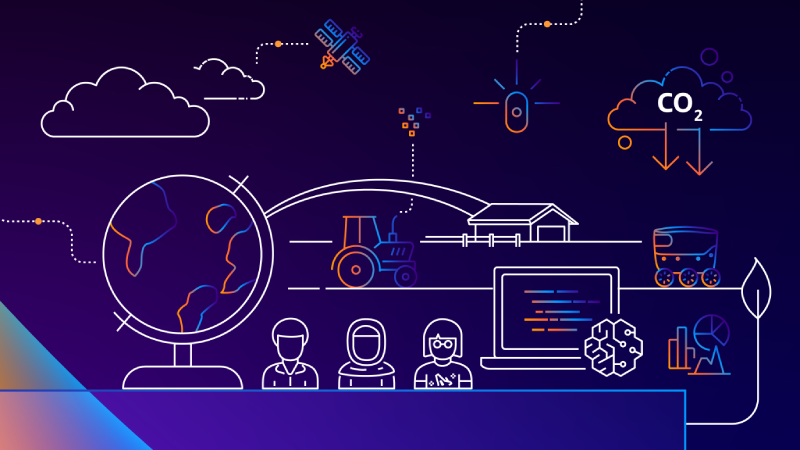Curious to discover the potential of InterviewQueue?
Enter your email address and we'll connect you with the right person.

Interviewqueue
August 24, 2024

In an era where the average person generates 6,120 MB of data per hour, there are endless possibilities for exploiting the data available at hand and making meaningful conclusions about it. One such powerful method is predictive analytics. It can solve issues in various fields, HR being one of them. Since HR processes no longer involve heuristically made decisions, predictive data will inform recruiters beforehand about the workforce requirements of an organization. This will facilitate better alignment of talent acquisition with the company’s objectives and constraints.
As a subfield of advanced analytics, predictive analytics makes predictions based on past data, statistical models, and machine learning methods. Predicting future events or behaviors entails analyzing historical and present data to find patterns and trends. Many industries use predictive analytics extensively to enhance strategic planning, streamline operations, and inform decision-making. Predictive analytics can assist firms in identifying potential turnover risks, predicting which candidates will succeed in particular roles, and improving overall recruitment strategies for talent acquisition. Companies can make better decisions, save hiring expenses, and increase retention rates by utilizing data such as past hiring results, employee performance metrics, and candidate attributes.

Predictive analytics is a potent instrument for identifying organizational shortcomings resulting from ineffective workforce management. Organizations can use sophisticated analytical techniques and historical data to identify patterns and trends that indicate areas of inefficiency and possible enhancement. Predictive analytics can assist in this area in the following ways:
1. Identifying skill gaps:
By analyzing workforce data, predictive analytics can spot areas in the organization where skilled employees are lacking. Businesses can thus identify areas in which more hiring or training is required by examining performance metrics and comparing them to industry norms or upcoming business needs.
2. Forecasting workforce needs:
Predictive analytics forecasts future workforce requirements by examining past hiring trends, employee attrition rates, and business growth trends. This guarantees that the company has the appropriate number of workers with the right skills available at the right time, which aids proactive planning. A well-planned workforce facilitates better organizational performance and provides a competitive advantage for the business entity.
3. Analyzing employee performance:
Data on employee performance can be evaluated by predictive models to find productivity-related trends and patterns in business operations. This can be useful in identifying underperforming personnel or departments and in identifying high-performing employees and the factors that lead to high performance. This will help create an efficient employee workforce, efficient in terms of cost efficiency and productivity.
4. Predicting employee turnover:
Increased staff turnover may indicate more severe organizational problems that are easily unpersuadable by management. By evaluating data such as employee engagement scores, tenure, job satisfaction surveys and exit interview responses, predictive analytics can pinpoint the causes of employee turnover. Anticipating which workers are likely to leave enables prompt actions to keep skilled personnel. Since significant employee turnover does not predict a good image of the organization, predictive analytics will help polish the organization’s image before the public.
5. Productivity maximization:
Ineffective use of human resources or over-employment can result in reduced productivity and bottlenecks. Analyzing project schedules, workloads, and resource allocation with predictive analytics can guarantee that labor is used efficiently, minimizing downtime and optimizing productivity. An organization is not only profitable by generating more sales but also by efficiently utilizing its resources. The aim is to reduce operating costs, and efficient handling of human resources can be a
6. Upskilling:
Constant upskilling is essential to create a positive organizational culture, keep up with the rapidly changing environment, and dynamically enhance market requirements. Predictive analytics pinpoint training needs by comparing employee performance to necessary competencies. This guarantees that training initiatives are focused and productive, assisting staff members in enhancing their abilities and output.
Predictive analytics used for skill-based hiring is a revolutionary method that emphasizes assessing and choosing candidates based on their unique skills and competencies rather than more conventional factors like work experience or educational background. This approach determines which skills are most closely linked to success on the job in an organization. Here are its advantages and how it functions:
Machine learning algorithms can be used to find trends and connections between abilities and successful performance in different types of roles. Given a candidate’s skill set, predictive models can be developed to predict how likely they are to succeed in a given role.
Assess candidates by contrasting their evaluated skills with those determined to be essential for the position. Assign candidates’ predictive scores according to their chances of success, which aids in identifying and prioritizing the most promising candidates.
Recruiters may utilize predictive analytics insights to make informed hiring decisions, ensuring candidates are selected based on their demonstrated capacity to perform a particular job’s functions. This data-based hiring decision will help hire the best candidates for a particular business entity by aligning the candidate’s skill sets with the job-specific skill requirements.

Using predictive analytics to forecast seasonal hiring patterns is a strategic approach that helps organizations anticipate and prepare for labour demand changes. Businesses can ensure they have the correct number of employees to meet seasonal demands, increase operational effectiveness, and improve overall business performance by utilizing historical data and advanced analytics. Benefits of Using Predictive Analytics for Forecasting Seasonal Hiring Patterns:
It helps anticipate reasonably in advance the appropriate number of people required by the company during busy times to handle rising demand without going overboard during slower times. Different recruitment strategies can thus be effectively formulated, including when to hire part-time employees, permanent employees, and interns and for exactly which departments.
By strategically scheduling and distributing recruitment efforts over time, recruiters can lower the additional expenses related to overtime and last-minute hiring.
When hiring requirements are known in advance, HR can take its time to attract and select better candidates instead of making hasty judgements.
During peak times, maintaining customer service standards and operational effectiveness can be achieved by ensuring enough staff.
Benefits of using predictive analytics in talent acquisition
Predictive analytics has a lot to offer regarding talent acquisition procedures. These benefits include better hiring quality, lower expenses, increased diversity, and data-driven decision-making. The key benefits are:
Predictive analytics uses performance metrics and historical hiring data to find applicants with the best chance of succeeding. As a result, new hires will perform better on the job, and the organization will be run more effectively.
Predictive analytics can drastically reduce the time needed to fill positions by optimizing the candidate screening procedure. Large amounts of candidate data can be swiftly analyzed by automated algorithms, which can then be used to prioritize the most promising candidates for additional review.
Predictive models can match candidates to positions by carefully evaluating their abilities, background, and potential fit with the company culture. This guarantees a stronger fit between candidate skills and job requirements, lowering attrition and raising job satisfaction.
Predictive analytics-driven effective hiring procedures cut expenses related to extended job openings, agency fees, and bad hiring choices. Businesses can maximize their recruitment expenditures by increasing the precision of their hiring forecasts.
By emphasising objective data and performance indicators rather than subjective standards, predictive analytics can reduce the impact of human bias in the hiring process. This promotes diversity and inclusion in the workforce by resulting in fairer and more equitable hiring practices.
Employers can forecast their future workforce requirements using predictive analytics, taking into account factors like staff turnover, seasonal trends, and business growth. This proactive approach makes better workforce planning and preparedness to handle impending demands possible.
Predictive analytics aids in hiring people who are more likely to be content and involved in their roles by identifying candidates who are likely to stay longer and perform better. This improves employee retention and lowers turnover rates.
Talent Insights is a talent intelligence platform that helps you make informed decisions with real-time insights from the world’s largest professional network. This tool helps recruiters find and target the best candidates by offering data-driven insights into talent pools.
HireVue is an artificial intelligence and HRM company that enables its clients to perform digital interviews, in which the job candidate converses with a computer rather than a human interviewer during the hiring process. It also evaluates applicant videos and forecasts job performance using artificial intelligence and predictive analytics.
With the help of artificial intelligence (AI), Eightfold offers the Talent Intelligence Platform, a one-stop shop for hiring, diversity, and retention. Businesses with Eightfold benefit from a talent advantage that gives them a competitive advantage. It also improves the hiring process using machine learning to forecast a candidate’s success and fit in the company.
Using data-driven behavioral insights and audited AI, Pymetrics is a soft skills platform revolutionizing hiring and talent management. It facilitates a more equitable, effective, and efficient hiring process throughout the talent lifecycle. It also assesses candidate qualities and matches them with appropriate roles using AI and neuroscience-based games.
One cannot exaggerate enough the value of predictive analytics in hiring. Organizations can revolutionize their hiring processes and make them more objective, strategic and efficient by utilizing advanced data analysis and machine learning techniques. A more competent and diverse workforce is produced when recruiters can use predictive analytics to find high-potential candidates, shorten the hiring process and eliminate biases when hiring candidates. Additionally, it guarantees a better fit between candidates and roles, which thus improves overall employee retention, enabling proactive workforce planning. Adopting predictive analytics in talent acquisition gives organizations a significant advantage, improving decision-making and promoting long-term organizational success as they navigate ongoing competitive pressures and dynamic market conditions.
In today’s fast-paced and competitive world, setting career goals is essential to achieve success and fulfillment. When it comes to choosing a career, each one of us finds ourselves contemplating back and forth between what’s right for us and how…
In today’s fast-paced, interconnected world, the benefits of emotional intelligence (EI) in leadership and team building are significant. Leaders with high EI can navigate the complexities of human emotions, fostering a positive and productive work environment. This article delves into…
It is impossible to overestimate the significance of ongoing learning and development in today’s quickly changing and fast-paced business environment. Retraining and upskilling employees have become essential tactics for businesses looking to maintain their agility and competitiveness. By investing in…
It’s more important than ever to navigate legal and ethical issues in the constantly changing recruiting and hiring market. Following the law and ethical principles is not only a compliance concern but also a significant competitive advantage. Businesses that aim…
Artificial Intelligence is all the rage right now and isn’t just restricted to ChatGPT. AI usage can be found in almost all fields and industries. The Hiring process has not been spared either. Around 40% of all companies worldwide already…
Get a response tomorrow if you submit by 9pm today. If we received after 9pm will get a reponse the following day.